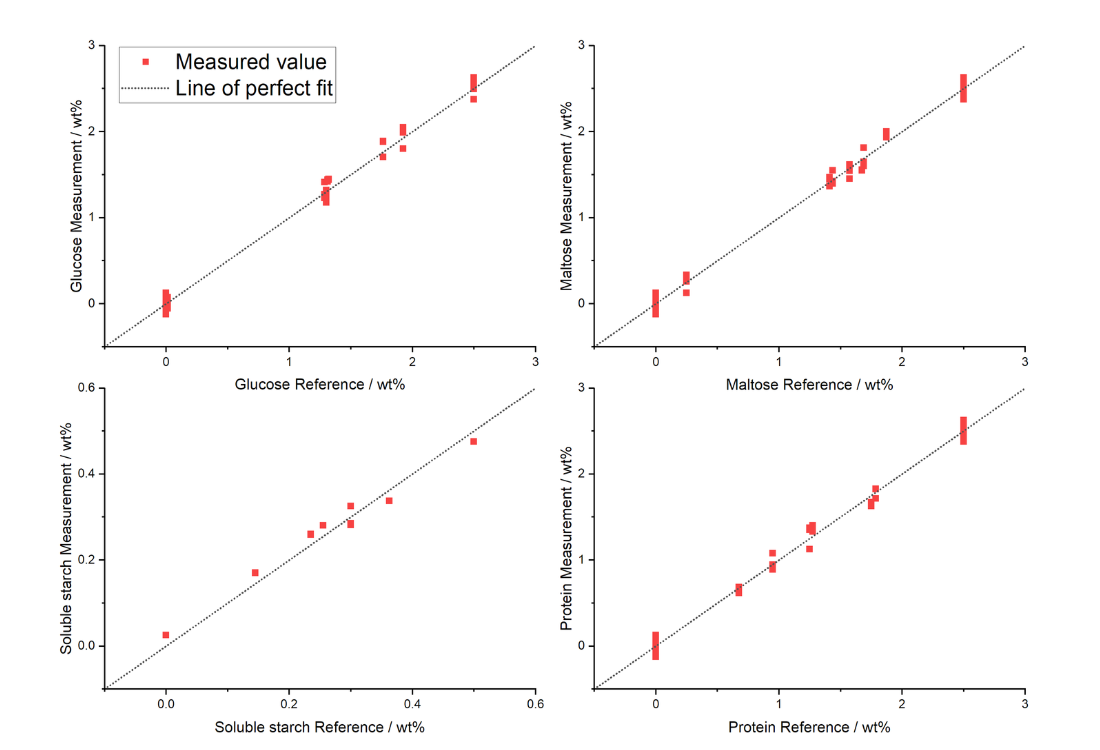On-line Industrial Analyzer For Monitoring And Controlling Starch Processing

Introduction
Starch processing is often at the heart of a complex and interconnected processing facility producing many high-value products. The IRmadillo allows you to understand what’s going on across the plant and optimize for maximum profit.

Modern processing of grains, flours and starches is substantially more complex than simply grinding grains into powders. The various chemicals and compounds within a starch feedstock – such as flours and cornmeal – can be extracted, altered, and purified depending on the end customer and product.
These processes can be difficult to analyze in real time as simple on-line measurements such as pH probes and temperature probes only give a glimpse into the process itself – to achieve more robust chemical profiling requires more sophisticated on-line techniques such as spectroscopy.
What’s The Solution?
Although there are lots of different available spectroscopic solutions, many of them are not suitable for starch processing. This is either because the performance required to differentiate and identify different sugar molecules is not good enough or because these methods cannot cope with solids in suspension.
The innovative design of the IRmadillo addresses these challenges. The IRmadillo is an on-line analyser based on FTIR spectroscopy using mid-infrared light. It has no moving parts and is designed to operate in industrial environments. It has been built for identifying a full range of chemical components simultaneously – including individual sugar species. It operates on-line to analyze liquids and slurries to provide real-time results. The IRmadillo connects to your facility’s DCS enabling real-time visualization for better control of your processes.
What Can It Measure?
There IRmadillo can measure a very wide range of different chemicals from organic molecules (such as sugars, alcohols, and acids) to inorganic molecular salts (such as sulphates and nitrates) and even some ions (such as Na+ and OH- ions). In-starch processing example applications are:
Sugar Profiles
- Makeup of sugars in syrup products
- Total fermentable sugars in fermentation feed
Protein Levels
- Protein leaching for gluten free flour
- Protein levels in liquefaction
- Gluten measurement in starch/protein separation process
Soluble Starch
- Soluble starch levels and dextrose equivalent in liquefaction
How Well Does It Work?
The IRmadillo has a very good performance analyzing a large number of different chemicals. The graph above is a representative example of measuring glucose, maltose, soluble starch and protein in a liquefaction style process. The typical average errors are:
- Glucose: 0.16 %
- Maltose: 0.19 %
- Soluble starch: 0.15%
- Protein: 0.19 %
The analyzer can measure all these chemicals - and many more - simultaneously. There is no upper limit to the concentration that can be measured.
What Does This Mean For You?
The IRmadillo can easily be calibrated to measure different chemical concentrations simultaneously in starch processing. It is a universal concentration meter for every chemical present in your process to enable real-time monitoring & control.
Features & Benefits
- Industrial analyzer for starch processing
- On-line process monitoring
- Mid-infrared spectroscopy
- Vibration-tolerant design for in-line process integration
- Simultaneous multi-species analysis
- Connects to your facility’s DCS for real-time visualization, enabling better process control
Keep In Mind
The IRmadillo is an FTIR instrument - not NIR!
There has been a lot of prior work attempting to use near-infrared (NIR) instruments for measuring sugars, starch processing and fermentations. In many cases these instruments are simply not suitable – the fundamental physics behind NIR instruments means they struggle to differentiate between similar sugars (such as maltose and glucose). They also normally have reflectance, transmission or transflectance probes – all of which can be blocked by solids or bubbles. As a mid-infrared instrument (FTIR), the IRmadillo has none of these problems!

